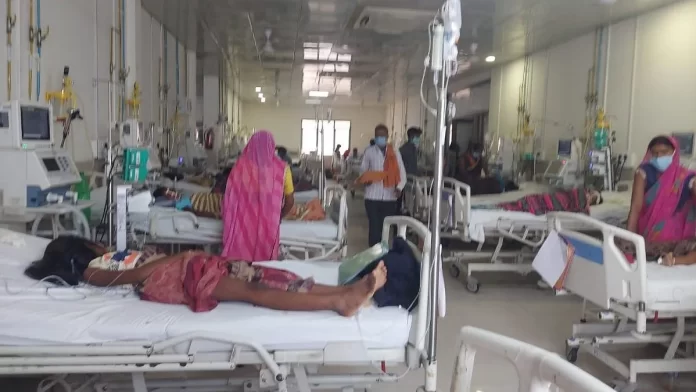New Delhi: Only three to five per cent of beds in district hospitals across India are reserved for emergency care, a report commissioned by government think-tank NITI Aayog has found.
The report, based on a study carried out by the Department of Emergency Medicine, AIIMS, New Delhi, surveyed the status of emergency and injury care in the country’s secondary, tertiary and district-level hospitals. It found that although 88 per cent of hospitals had in-house ambulances, only 3 per cent had the trained paramedics needed to assist ambulance services.
The report, released Friday, further found that the provisions of specialised care during ambulance transport were “largely poor”, as only 12 per cent hospitals had mobile stroke/STEMI (ST-Elevation Myocardial Infarction, a type of heart attack) programmes.
In terms of physical infrastructure, despite high patient load reporting to the emergency departments of district hospitals, around 94 per cent of hospitals had no point-of-care labs (for simple tests), 76 per cent lacked separate access for ambulances, and 68 per cent hospitals lacked adequate spacing for the emergency department.
According to the report, the cases encountered at emergency departments of hospitals were mostly related to fever (29 per cent), abdomen pain (22 per cent), trauma and road traffic injuries (18 per cent), respiratory distress (9 per cent), chest pain (8 per cent), pregnancy-related (7 per cent), altered mental status (6 per cent), stroke (5 per cent), snake bite (5 per cent) and poisoning (3 per cent).
A total of 34 district hospitals, randomly selected from 28 states and two Union territories, were assessed for the report.
Hospitals lack trained staff
The report also pointed out that most of the hospitals lacked the presence of general doctors, specialists and nursing staff dedicated to emergency departments, in proportion to patient numbers.
“Besides, when present, most of the EDs (emergency departments) were manned by junior doctors rather than specialists,” it said, adding that the list of essential medicines was not available at most hospitals.
“Since it is essential to have the complete list of all recommended emergency medicines 24/7 in the emergency departments, assessment done for this aspect revealed that none of the district hospitals fulfilled this criterion,” the report said.
“Critical care services (involving intensive care services such as ICU, HDU, PICU, NICU, CCU, Neuro ICU) varied across hospital facilities, but were typically largely deficient at smaller district hospitals,” it added.
None of the hospitals included in the report had funds dedicated for emergency care services, and only a few received funds as part for delivery of trauma-care.
“The landscape of emergency care includes timely access and acute care delivery to critically ill and injured patients. Premature death and Disability Adjusted Life Years (DALYs) can be prevented by establishing a robust integrated emergency care system with definitive care,” said AIIMS New Delhi director Randeep Guleria.
“I strongly believe that the outcomes of this study will provide the policy inputs to improve and strengthen the emergency care services at district hospital level in India,” he added.
(Edited by Arun Prashanth)
Also read: Omicron symptoms mild with or without vaccination, says South Africa doctor who flagged variant






